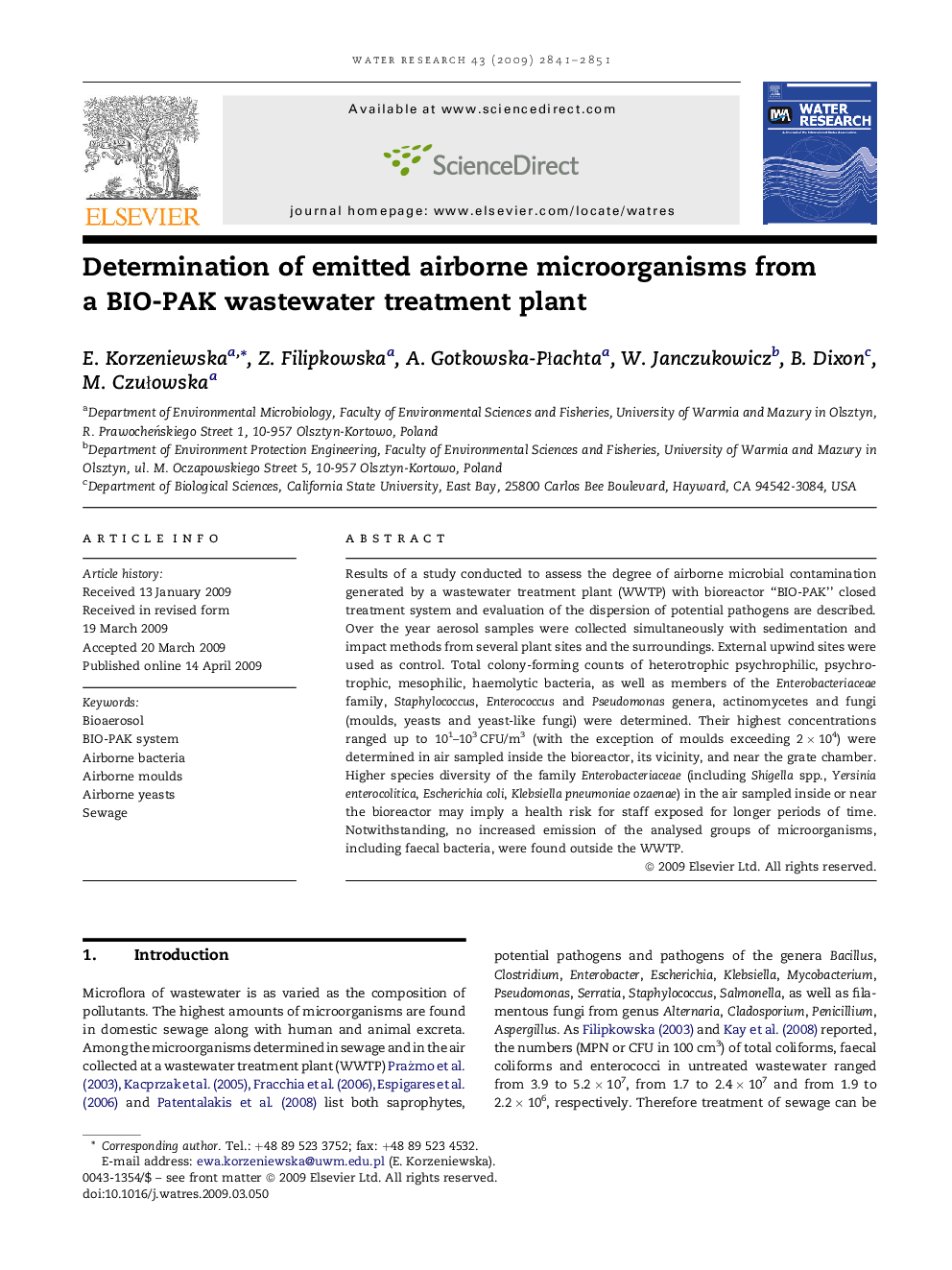| Article ID | Journal | Published Year | Pages | File Type |
|---|---|---|---|---|
| 4484653 | Water Research | 2009 | 11 Pages |
Results of a study conducted to assess the degree of airborne microbial contamination generated by a wastewater treatment plant (WWTP) with bioreactor “BIO-PAK” closed treatment system and evaluation of the dispersion of potential pathogens are described. Over the year aerosol samples were collected simultaneously with sedimentation and impact methods from several plant sites and the surroundings. External upwind sites were used as control. Total colony-forming counts of heterotrophic psychrophilic, psychrotrophic, mesophilic, haemolytic bacteria, as well as members of the Enterobacteriaceae family, Staphylococcus, Enterococcus and Pseudomonas genera, actinomycetes and fungi (moulds, yeasts and yeast-like fungi) were determined. Their highest concentrations ranged up to 101–103 CFU/m3 (with the exception of moulds exceeding 2 × 104) were determined in air sampled inside the bioreactor, its vicinity, and near the grate chamber. Higher species diversity of the family Enterobacteriaceae (including Shigella spp., Yersinia enterocolitica, Escherichia coli, Klebsiella pneumoniae ozaenae) in the air sampled inside or near the bioreactor may imply a health risk for staff exposed for longer periods of time. Notwithstanding, no increased emission of the analysed groups of microorganisms, including faecal bacteria, were found outside the WWTP.
